5 All-Natural Japanese Remedies To Fight And Prevent Colds
Japan's Best Natural Home Cures
Prevent any colds and boost your immune system with these five age-old natural cures.
Have you been suffering from a 夏風邪 (natsukaze; “summer cold”)? While drugstores offer a variety of products that help prevent colds, some traditional Japanese remedies are said to do the same. Here are five Japanese remedies for fighting and preventing colds that have been used throughout Japan’s history.
- Umeboshi (Pickled Plum)
- Hachimitsu-Daikon (Honey with Daikon)
- Shoga-Yu (Hot Ginger Tea)
- Okayu (Boiled Rice Porridge)
- Tamago-zake (Hot Sake & Egg)
1. Umeboshi (Pickled Plum)
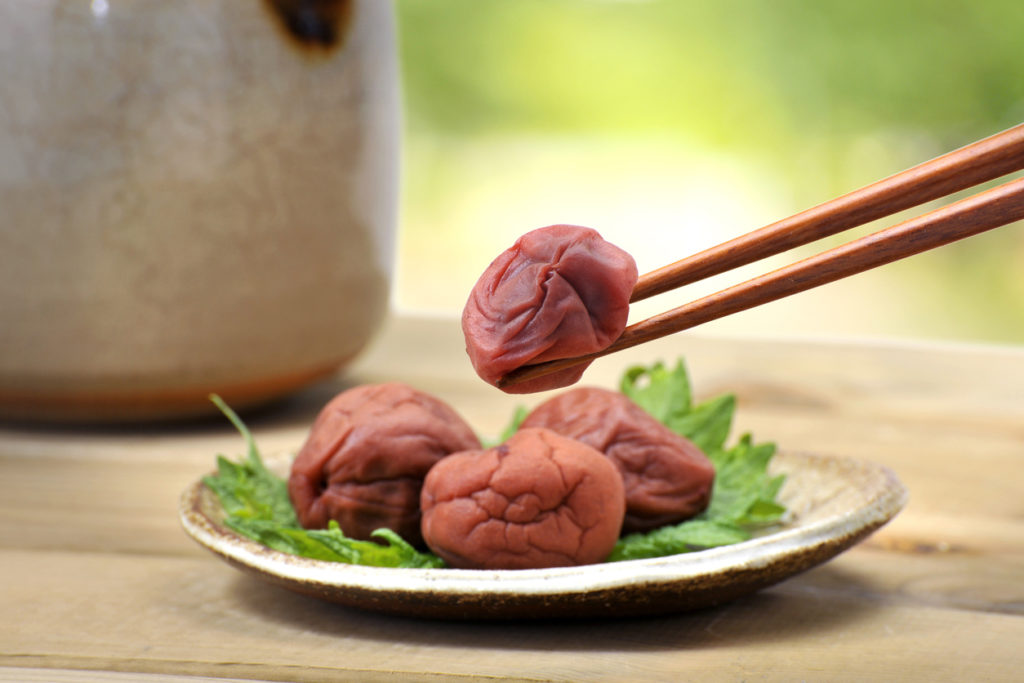 © Photo by iStock: marucyan
© Photo by iStock: marucyanKnown for their distinctive sour yet pungent flavor, Umeboshi, or pickled plums, are packed with wonderful medicinal qualities, including an alkalizing effect on the body, helping to fight fatigue, being a great rescue to a hangover and aiding digestion. Umeboshi are often purchased in supermarkets and convenience stores; consequently, they are commonly found in Japanese households and bentos. What’s more, the umeboshi in bentos are strategically placed in the center of the rice to kill germs and preserve the fresh taste. They can be eaten on their own, with rice, or even added to tea or hot water.
If you are feeling unwell, add one or two umeboshi to some boiled water and stir until you have broken up the umeboshi into tiny pieces. Drinking this tea will help fight flu-like nausea and eliminate any toxins from your body. It will also cause you to sweat, which will help stimulate your immune system, thus helping you to get better faster.
2. Hachimitsu-Daikon (Honey with Daikon)
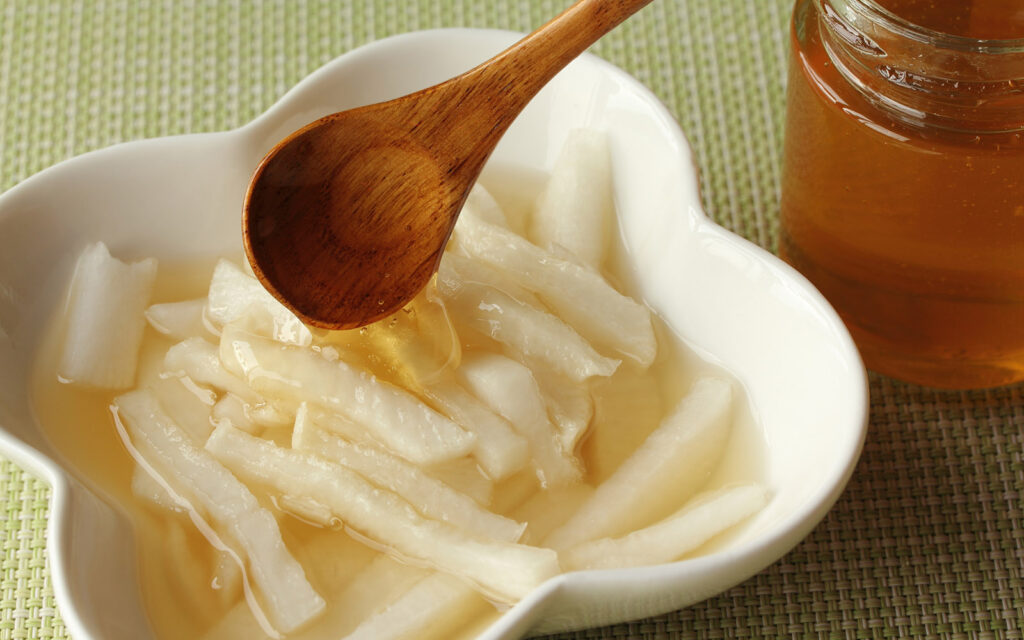 © Photo by Pixta: dorry
© Photo by Pixta: dorryHachimitsu-daikon is an old grandma-guaranteed natural remedy for colds, coughs and sore throats. Daikon (white Japanese radish) is packed with Vitamin C and rich in special enzymes that act as mucolytic agents, helping to dissolve and expel mucus. Honey, on the other hand, has natural antibiotic and anti-inflammatory properties. Basically, hachimitsu-daikon is a Japanese form of cough and throat syrup.
Chop a handful of daikon and put it into a glass container, then cover the chopped daikon evenly with honey and put the lid on. Leave the honey-daikon mixture at room temperature for approximately three to four hours. The prepared syrup can be taken two to three times a day (1 Tbsp./time), either straight or by adding a tablespoon to a cup of hot water to make a soothing tea. The mixture will last for about a week when stored in the fridge.
It’s preferable to use manuka honey, as cheaper options often have corn syrup mixed into the bottle or jar. Manuka honey has incredible healing powers and is used to treat ulcers and severe inflammation of the esophagus.
3. Shoga-Yu (Hot Ginger Tea)
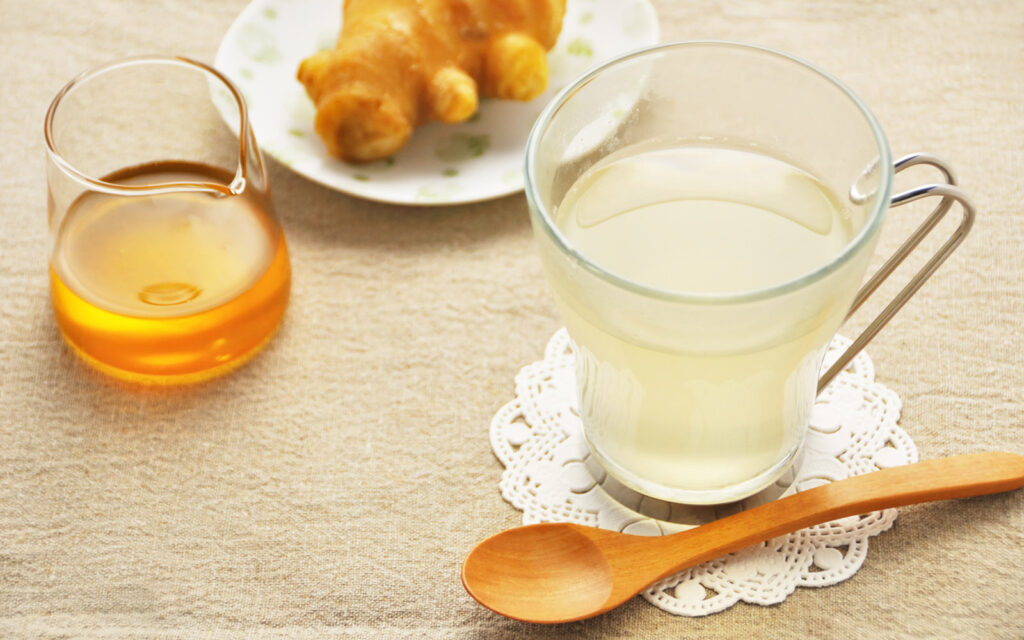 © Photo by Pixta: 鳥居哲也
© Photo by Pixta: 鳥居哲也Shoga-yu, or hot ginger tea, is one of the most common and easily accessible home remedies for colds in Japan. This tea has high levels of vitamin C and amino acids, and many other nutrients. Ginger also has a warming effect, which is ideal for combating a cold or flu.
To make the tea, boil a small pot of water with a medium-sized ginger root that has been peeled and cut into small pieces for approximately 20-30 minutes. Afterward, the water will become pale yellow. When serving, add a tablespoon of organic regular or manuka honey. Do not heat up the ginger water with honey. All in all, drink three to five times per day.
4. Okayu (Boiled Rice Porridge)
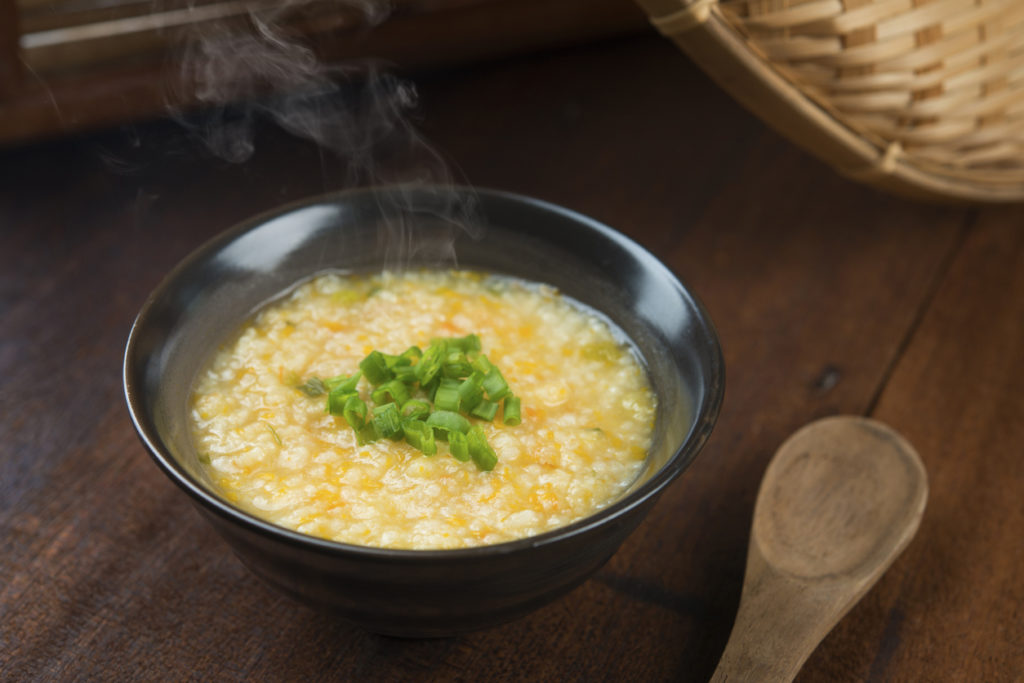 © Photo by iStock: szefei
© Photo by iStock: szefeiOkayu is boiled rice or Japanese congee (porridge) made of rice, water and some mild seasoning. It is often prepared in a clay pot, starting with a small piece of kombu to add some flavor. Once the porridge has reached the right consistency, various toppings are added for extra flavor.
Okayu is a staple to serve to family members who are battling a cold. If you have a rice cooker at home, then check the settings: you will find a お粥 or おかゆ (okayu) button, which will make cooking this dish even easier.
5. Tamago-zake (Hot Sake & Egg)
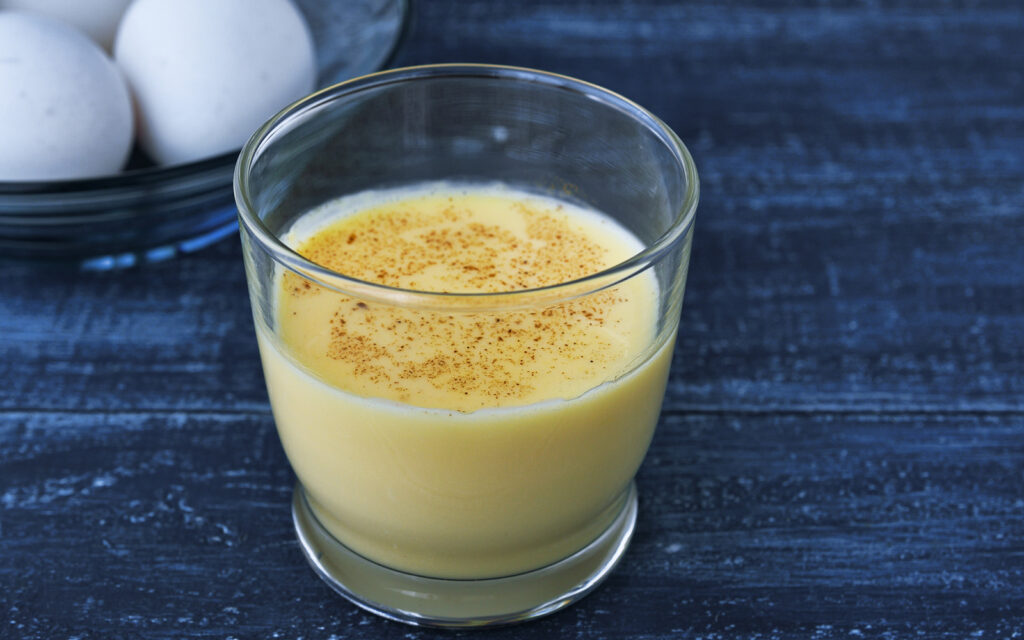 © Photo by Pixta: マノリ
© Photo by Pixta: マノリTamago-sake, otherwise known as a type of eggnog, is made by heating up sake with honey and raw egg. While it doesn’t sound very pleasant, it is an ancient Japanese natural remedy for stubborn colds and flu. This drink is best consumed before bedtime.
To prepare, mix one beaten egg with two teaspoons of honey and heat 180ml of sake over low heat. Slowly add the egg-honey mixture to the warmed sake and stir continuously until a thick and creamy drink is formed. Tamago-zake should be consumed hot. For children, the sake can be boiled to evaporate the alcohol and cooled before adding the egg-honey mixture.
What did you think of our roundup of Japanese remedies to fight and prevent colds? Let us know in the comments!














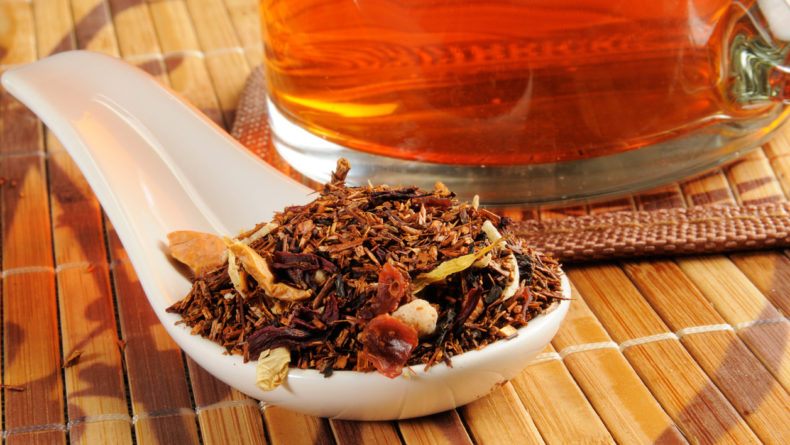

Leave a Reply